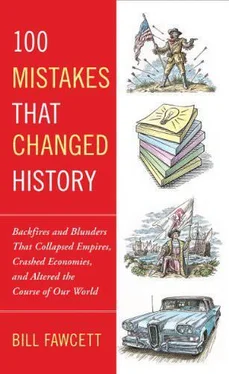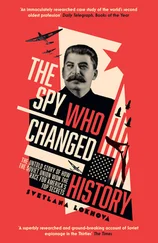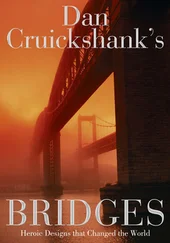But there was another factor beyond unrealistic expectations that made this declaration one of the worst mistakes the German Führer ever made. The American public simply did not want to get involved in a second war. Isolationist candidates had won many elections. For more than two years the American president, Franklin Roosevelt, had been lobbying for the country to be more involved in the war in Europe. His often-stated opinion was that if the Nazis were able to use the wealth and manufacturing power of an occupied Europe, they would pose a deadly threat next to the Americas. But on December 10, 1941, the Americans were not angry with Germany. On December 8, Congress had declared war only on Japan. The military, and the people, wanted revenge for that day of infamy. But by declaring war on December 11, Hitler made Germany appear part of the conspiracy. It gave Roosevelt an opening to do what he wanted, where he wanted. Only after Hitler declared war was the American declaration expanded to include Germany. Almost immediately, the power generated by the surprise attack was channeled into Roosevelt’s Europe First policy. America began to mobilize and plans were made to send the bulk of the new army to England, not the Pacific. The shipments of trucks and weapons to all of the European Allies were dramatically increased as the United States went on a wartime footing.
It is likely that eventually the United States would have joined the war in Europe. But without Hitler’s declaring war first this might have happened months later. The Asia First movement was strong even after Hitler’s declaration. It is notable that, in his December 9 fireside chat, Roosevelt did not call for a declaration of war on Germany. He blamed them for having goaded Japan into attacking but stopped short of widening the war. Had he done so, he might well have lost the amazing unity caused by Pearl Harbor and become more susceptible to the growing attacks he was under for his failed domestic policies. So without Hitler doing it for him, Roosevelt would likely have had to wait months before declaring war on Germany, perhaps longer. Those months of delay could have been decisive. In a scenario that does not include the massive number of trucks, tanks, aircraft, weapons, and ammunition that the United States sent to Russia and England during those months, the German army might well have been victorious in Russia in 1942. Without the American armed forces in Europe and a resilient Russia, the defeat of Germany, if possible at all, would have taken years longer.
Rarely has a wartime leader been so completely wrong. In declaring war on the United States on December 11, Hitler accomplished exactly the opposite of what he expected. It gained Germany no assistance against Russia and enabled Roosevelt to shift the emphasis of the American war effort to Europe. Hitler’s declaration of war may have actually served Japan well, but only because it allowed Roosevelt to send fewer forces to the Pacific and more forces to Europe. An emphasis on Japan would have meant that the war in the Pacific would have ended earlier. Instead, by declaring war on the United States at a crucial time when American anger was just crystallizing, that Nazi act of solidarity helped both to hasten and to make inevitable the defeat of Germany.
79. NOT LEARNING FROM HISTORY
Full Speed Alone
1941
It is impossible to discuss what mistakes Japan made in World War II without including some mention of how they ignored 2,500 years of naval tactics and paid a high price for doing so. The convoy system for protecting merchant ships goes back to when warships were first invented. When the Persian emperor Xerxes’ triremes lost the sea battle of Salamis, he was forced to withdraw most of his invading army from Greece. This was not because they were under any threat, but because his army needed to be supplied by merchant ships crossing the Adriatic Sea. With the loss of most of his triremes, Xerxes no longer had enough ships to convoy those merchants and protect them from Greek raiders. That, combined with a fear of losing his escape route across the Bosphorus, is why the Battle of Salamis won both the land and naval war for the Greek city-states.
In time of war during the age of sail, the practice of convoying groups of merchant ships with warships was the established policy for all of Europe. The English sea dogs always lay in wait for the Spanish plate (as in silver plate) fleet, which consisted of armed merchant vessels protected by Spanish warships. The English navy itself formed convoys during almost every war. A British convoy crossing the Atlantic during the Napoleonic Wars might contain as many as 100 merchants and be protected by as many as five frigates and often a ship of the line.
The British were slow to institute convoys in World War I, waiting until 1917. When they finally did, there was a nearly 50 percent drop in merchant ship losses. During that period, most of the coal used in France had to be transported to them across the English Channel. Initially, German submarines wreaked havoc with the slow cargo haulers. But once a strict convoy system was implemented, the total losses to submarines for the next year was a negligible four ships out of hundreds of sailings.
In World War II, the Royal Navy instituted a convoy, beginning on September 6, 1939. That convoy consisted of thirty-six ships sailing in four rows of nine each with an escorting warship front, right, and left. The first major assistance given to Britain, at Roosevelt’s insistence under the Lend-Lease Act, was not cannons or tanks, but fifty destroyers and fifty-four destroyer escorts. These were all used for the convoy duty of protecting Britain’s Atlantic shipping from U-boats. All British ships crossing the Atlantic during World War II were required to sail in convoy. After Pearl Harbor, a combination of the U.S. Navy instituting convoys in May 1942 and technical advances broke the U-boat offensive a few months later. By February 1943, with aircraft and even small aircraft carriers acting as escorts, the German navy lost forty-three U-boats and sunk only thirty-four merchant ships. Wellescorted convoys could overcome even the highly sophisticated tactics of Doenitz’s U-boats. Lone ships never had a chance. When Russia joined the war, convoys of weapons and ammunition were instituted to sail from Britain, past occupied Norway, to Murmansk.
Which leads to the question of why did Japan, the other major island nation engaged in World War II, fail to ever institute a convoy system? A large part of the reason may have been the attitude of those in command. Warships were meant to fight battles, not protect merchants. This strategy worked at first after the Philippines and Wake Island fell. Distances were too far for American submarines to spend much time in the major Japanese shipping lanes and subs were too few. But as the war progressed, the Japanese merchant fleet was subjected to ever greater losses with no reaction by the Imperial Japanese Navy other than to tell them to sail faster and zigzag. In December 1941, the Japanese lost only twelve merchant ships out of hundreds. In January, as the American bases in the western Pacific were lost, the number dropped to only seven ships lost. By that February, only two were sunk all month. Similar numbers prevailed until the end of 1943. This success without convoys meant dozens of destroyers could act as escorts to carriers, transport troops, or bombard enemy islands, and so the Japanese felt that their strategy worked.
But then losses began to mount, and rather than institute convoys, the Japanese reacted to the increased sinkings by announcing that more merchant ships had to be built. This “solution” was stunted by the limited shipbuilding facilities available and the competition for those same spaces by the Imperial Navy. By 1944, the Japanese merchant losses more than doubled, ranging from a low of sixteen to more than forty ships lost each month. Oil tankers particularly suffered. The amount of oil reaching Japan went from 1.75 million barrels in August 1943 to 360,000 barrels in July 1944. This was an intolerable level and far below the needs of either their industry or military. When the world’s largest battleship, the Yamato , made its final sailing, it had on board only enough fuel to reach the American fleet and not enough to get back to Japan. There was no more to spare for even the possibility that the great ship might survive to fight on. It didn’t.
Читать дальше












